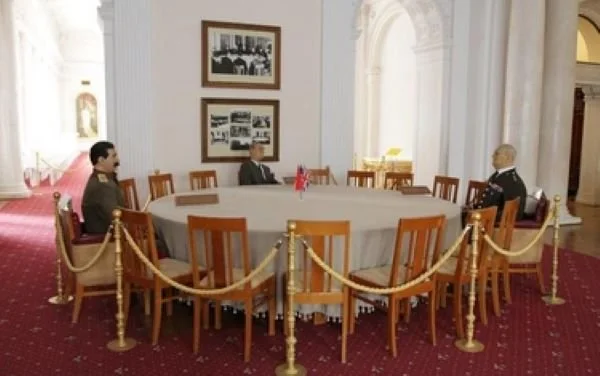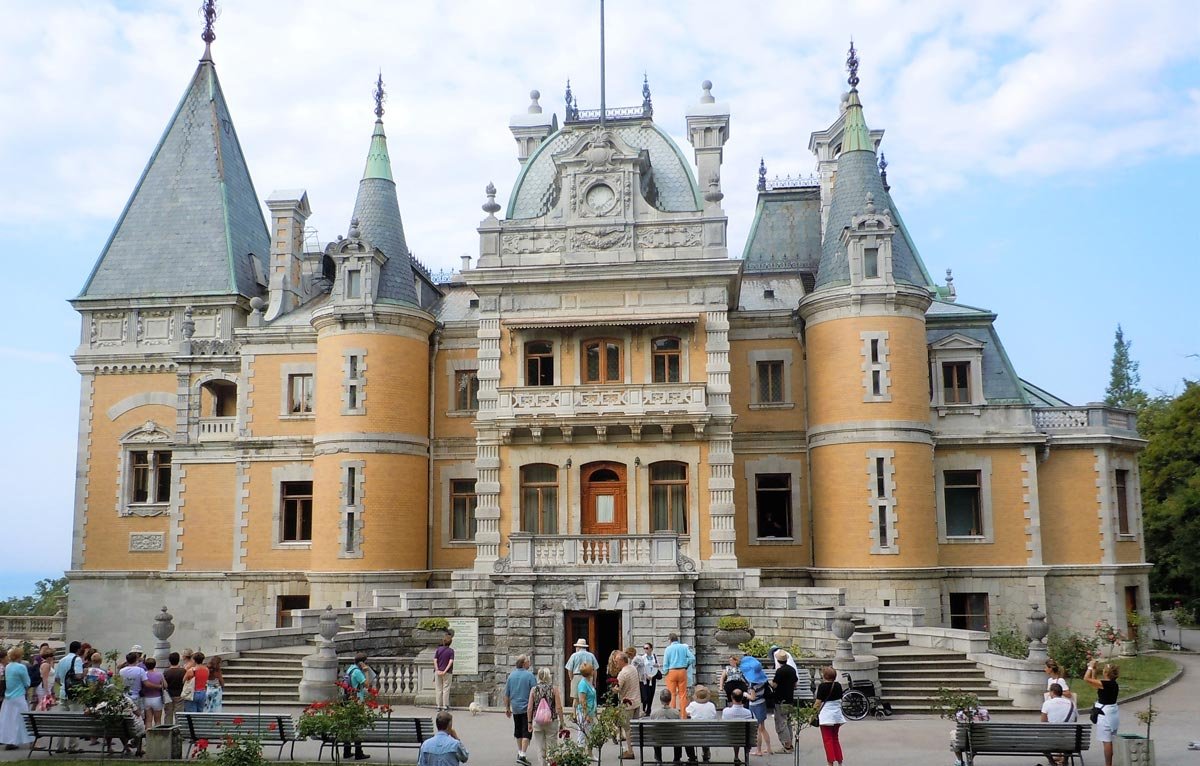Yalta’s Beautiful Livadia Palace Has Tragic Memories – Crimea, Ukraine
What is It - During Russia’s imperial age, the royal family and other aristocrats often travelled to the south shore of Crimea for rest and relaxation. After rail lines to Sevastopol were constructed, the city of Yalta emerged as a resort town and Czars from the Romanov family commissioned architects to design palaces for entertainment and relaxation in the area. The most significant palace was Livadia Palace located two miles west of the port in Yalta. They never imagined that future conflicts affecting the fate of numerous nations and leaders would be contested in and around this beautiful residence.
Livadia Palace- Czar Alexander II built a palace on the Livadia property as a gift for his wife during the 1860s and his successor Alexander III lived for many years in a second palace he constructed there. It was Czar Nicholas II, however, who built the sparking white palace, courtyards and elaborate gardens now located on the property in 1911 after tearing down the earlier structures there. Designed by a famous Russian architect, the Livadia Palace was built in the style of an Italian villa with white granite, fountains, patios, and balconies, but also 116 rooms and modern living facilities for the royal family. For four summers after its completion, the Czar, Czarina, and their children vacationed there in the spring and the fall. They were outdoor enthusiasts who enjoyed swimming, riding, walking and tennis. These happy days ended suddenly with the commencement of World War I in 1914. Civil war erupted throughout Russia in 1917 and the Revolution led to the arrest and subsequent murder of the Czar and his family by the Bolsheviks in 1918. The Soviet government then used the palace as a tuberculosis sanitorium until World War II broke out.
In February 1945, the palace became an international landmark because the leaders of the three allied powers, Roosevelt, Churchill, and Stalin, held most of the meetings of the important Yalta Conference. They established terms for the division of authority and the future governance of the defeated Germany and other nations in Eastern Europe and the Mediterranean affected by the war. Historians still debate the outcome of the Yalta Conference and its impact on the 45 year long Cold War that soon followed between the Soviet Union and the west.
After the war, the palace was sometimes used as a dacha for Communist party officials, but the newly independent Ukrainian government established it as a national museum in 1993 and used it for international meetings. The palace has remained open to the public since Russia took control of the area in 2014. For more than 30 years, visitors to the museum have been able to enjoy the exterior beauty of the building, the large park with gazebos and fountains surrounding it, monuments to Czar Alexander III and the allied leaders, and even summer concerts there. Meanwhile, the tables used at the Yalta Conference and the pictures of the Czar’s family and World War II leaders on display there provide a stark reminder of the vagaries of history. The future legacy of Livadia Palace remains unsettled with Crimea presently at the center of a brutal conflict between Russia, Ukraine, and NATO over control of disputed regions in Ukraine. As a result, the U.S. State Department includes Crimea in its Do Not Travel advisory for Ukraine.
Interesting Facts- Another palace built by Czar Alexander II around 1900 was located ten miles to the east of Livadia in the village of Massandra. Rarely used by the nobility, the Massandra Palace also served as a government sanatorium and later a state dacha cottage by the Soviet Union. Ironically, a 1993 agreement between Russia and Ukraine which provided for the nuclear disarmament of Ukraine is called the Massandra Accords since it was executed there by the two countries.
When to Go- The weather in the Yalta area is quite pleasant with little rain from May until mid-October with high temperatures ranging from 67 to 82 degrees so this is the best time to visit the palaces and other sites there. November through March are cool with rain, snow, and windy conditions.





